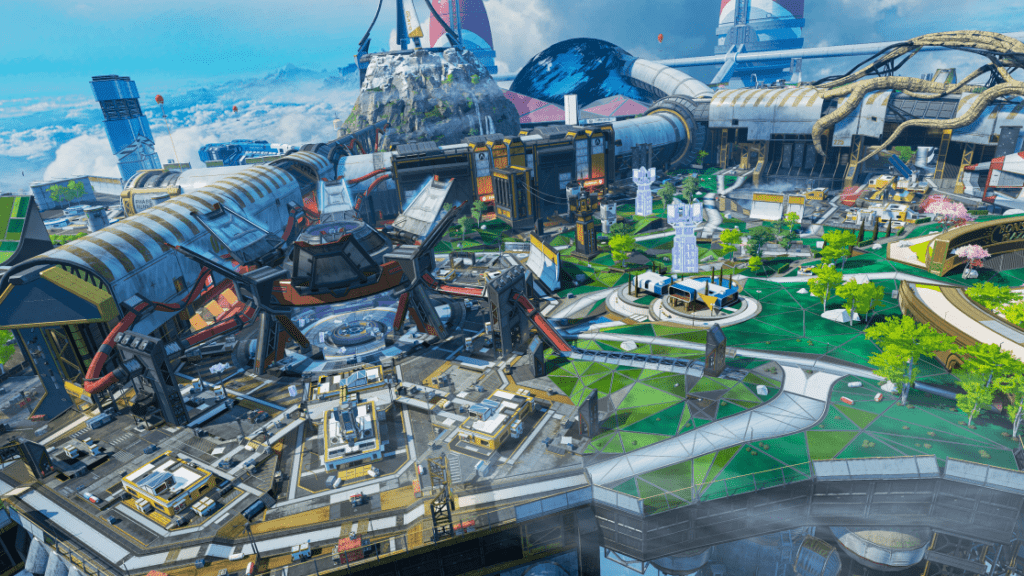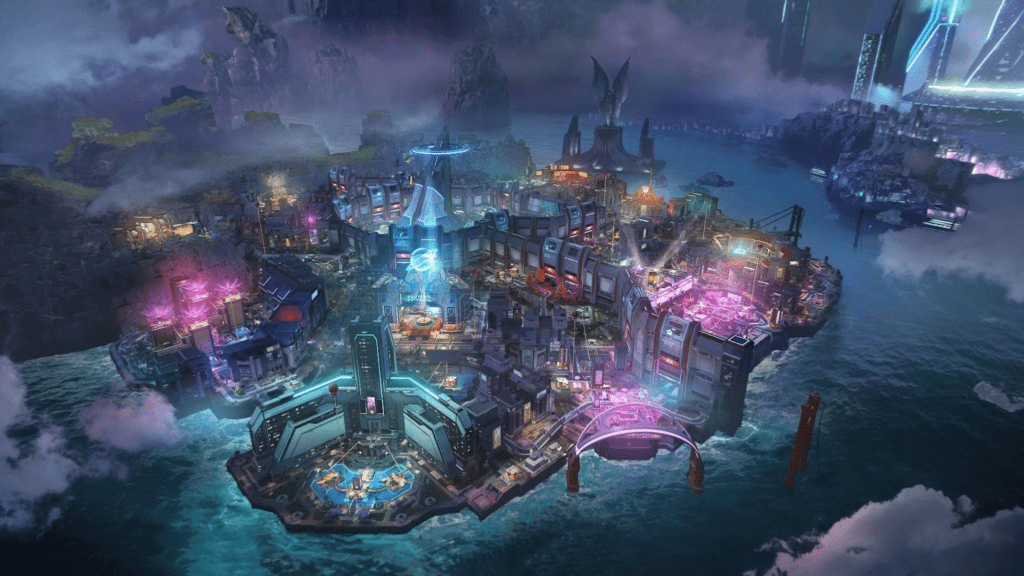In the dynamic world of Apex Legends, maps are continually evolving, impacting gameplay and strategy. See the latest Apex Legends map rotation here.
For gamers, Esports fans, and enthusiasts who want to stay ahead of the curve, understanding the Apex Legends map rotation is essential. This blog post covers the ins and outs of Apex Legends map rotation, detailing the variety of maps available, seasonal changes, and how these Apex Legends map rotation affect gameplay.
Overview of Apex Legends map rotation
Apex Legends features a total of eleven maps divided into two categories: five large Battle Royale maps and six smaller Mixtape maps (previously known as Arenas maps).
Battle Royale maps
- Kings Canyon (from launch): The original map that debuted with Apex Legends, Kings Canyon is well-loved for its diverse landscapes and complex terrain. Players often remember it fondly as the starting point of their Apex journey.
- World’s Edge (from Season 3): Introducing new biomes and urban environments, World’s Edge offers a mix of industrial and natural settings, which challenge players to adapt their strategies.
- Olympus (from Season 7): Set in a floating city, Olympus adds verticality and open spaces, emphasizing the importance of mobility and positioning.
- Storm Point (from Season 11): This tropical-themed map is the largest in Apex Legends, featuring a mix of beaches, jungles, and ancient ruins, which provide varied combat scenarios.
- Broken Moon (from Season 15): The newest addition to the roster, Broken Moon offers lunar landscapes that require players to navigate low gravity environments and unique structures.
Mixtape maps
- Party Crasher (from Season 9): Known for its vibrant, nightlife-themed setting, Party Crasher is a small, action-packed map ideal for quick skirmishes.
- Phase Runner (from Season 9): Featuring teleportation mechanics, Phase Runner requires players to think strategically about movement and positioning.
- Overflow (from Thrillseekers event): A fiery, industrial map that emphasizes close-quarters combat and quick reflexes.
- Encore (from Monsters Within event): Set in an arena-like structure, Encore provides various sightlines and vantage points, making positioning critical.
- Habitat 4 (from Dark Depths event): With its jungle and cave environments, Habitat 4 offers plenty of ambush opportunities and tactical gameplay.
- Drop-Off (from Warriors event): An industrial map set in a high-rise building, Drop-Off challenges players to manage vertical combat effectively.
Seasonal Apex Legends map rotation
At the start of each season, Apex Legends introduces changes to the Apex Legends map rotation to keep gameplay fresh and exciting. These changes can include the addition of a new map or significant updates to existing maps.
Major map updates (MU)
When a new map is introduced or an existing one receives a significant overhaul, it dramatically shifts the game’s dynamics. For instance, the introduction of World’s Edge brought entirely new biomes and urban landscapes, requiring players to develop new strategies.
Minor map changes: Town takeovers (TT)
Town Takeovers are smaller, thematic changes to existing maps that are modeled after specific Legends. These takeovers usually accompany in-game events and offer unique locations and loot.
Examples of Town Takeovers include:
- Octane’s Gauntlet in Kings Canyon: A high-speed obstacle course adding new ways to traverse the map.
- Crypto’s Map Room in Kings Canyon: A surveillance center providing valuable intel to players.
- Bloodhound’s Trials in World’s Edge: A hunting ground offering high-tier loot to those who can defeat prowlers.
Impact on gameplay
Map rotation in Apex Legends isn’t just a cosmetic change; it significantly impacts gameplay. Here’s how:
Strategy adaptation
Each map requires different strategies. For example, the open spaces of Olympus favor long-range engagements, while the tight corners of Kings Canyon’s urban areas encourage close-quarters combat. Players must adapt their playstyle and weapon choices based on the current Apex Legends map rotation.
Legend selection
Certain Legends perform better on specific maps. Pathfinder and Horizon, with their superior mobility, excel in the vertical gameplay of Olympus, while Caustic and Wattson thrive in the enclosed spaces of King’s Canyon.
Competitive play
For Esports professionals and competitive players, map rotation dictates practice routines and strategies. Teams must be proficient in all maps to maintain a competitive edge, making it crucial to stay updated with the latest rotations.
Current Apex Legends map rotation
As of the most recent update, the current map rotation includes:
- Battle Royale: Kings Canyon, World’s Edge, and Olympus.
- Mixtape: Party Crasher, Phase Runner, and Overflow.
These rotations are subject to change with each season, so it’s essential to keep an eye on patch notes and official announcements from Respawn Entertainment.
What is the map rotation for Apex Legends
To stay ahead in Apex Legends, keeping track of map rotations and updates is crucial. Here are a few tips:
- Follow Official Channels: Respawn Entertainment regularly posts updates on their Twitter, blog, and community forums.
- Join the Community: Engage with fellow players on Reddit, Discord, and other gaming forums to share insights and stay informed about the latest changes.
- Use Third-Party Resources: Websites like the Apex Legends Wiki provide detailed information on maps, rotations, and updates.
Understanding the map rotation in Apex Legends is vital for any serious player. From adapting strategies to selecting the best Legends for each map, staying informed can give you a competitive edge. Whether you’re a casual gamer or an Esports professional, knowing the ins and outs of Apex Legends maps will enhance your gameplay experience.




